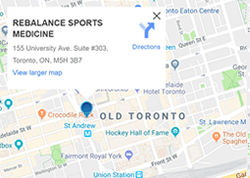Nerves and Pain
 Nerves are the communicators of the human body. They are bundles of axons which pass information between the brain, spinal cord and tissues using electrochemical signals. They tell the muscles to contract, as well as provide sensory feedback to the brain regarding sensation, and can communicate between themselves.
Nerves are the communicators of the human body. They are bundles of axons which pass information between the brain, spinal cord and tissues using electrochemical signals. They tell the muscles to contract, as well as provide sensory feedback to the brain regarding sensation, and can communicate between themselves.
Individual axons are wrapped in connective tissue, bundled into fascicles, and then fascicles are bundled together to form a whole nerve. The connective tissue around each nerve helps protect it and can increase the speed of communication by increasing the speed of the signal(1).
Nerves course through the body through the torso and limbs, they pass between muscles, joints, fascia, and fibrous tunnels. Because daily movements change the position of joints, muscles and other tissues, their force on neural structures also changes throughout the day. In order to be remain protected from the daily changes within the mechanical structure of the body, nerves must be able to slide and elongate, as well as withstand a certain amount of pressure and angulation. When these protective mechanisms fail or are exceeded, symptoms may result. Disc derangement, high intramuscular pressure, arthritic changes, instability, and overuse are examples of disorders that often have negative neural consequences.
Altered neural function can cause many symptoms; pain, numbness, weakness, pins and needles, altered reflexes, changes in muscle tone, and inflammation of surrounding tissues. The pain can occur anywhere along the pathway of the nerve, or in any of the tissue the nerve ‘connects’ to. This means that a nerve can be compressed in the back, and symptoms could be felt anywhere along the pathway of the nerve all the way down to the big toe.
During an assessment, physiotherapists will assess the nerves to ensure that they are not the cause of any pain or discomfort felt in the body. Nerve tension and neurodynamics are important to assess when looking at the nervous system. This involves stretching the nerves and sliding them through the tissues they travel through to determine if there is any discomfort or differences in tension and movement from the painful side to the non-painful side.
Patients can be surprised when the pain at the bottom of their foot that they had assumed was plantar fasciitis ends up being a neurodynamic issue. Sometimes torn hamstrings that ‘haven’t healed’ can lead to the sciatic nerve being entrapped in scar tissue. A nerve compressed by tight forearm muscles or stiff vertebrae in the neck can be the cause of tennis elbow or golfers elbow pain. Nerves have a very powerful impact within the body and it is important not to overlook them.
A common way to improve and treat neural function is to improve the neurodynamics. Restoring the balance between the movements of neural tissues and surrounding mechanical interfaces, reduces pressures on the neural tissue and promotes optimum function. The hypothesized benefits from such techniques include facilitation of nerve gliding, reduction of nerve adherence, dispersion of noxious fluids, increased neural vascularity, and improvement of axonplasmic flow(2). Physiotherapists often prescribe ‘flossing’ techniques, where the nerve slides back and forth by tensioning one end of the nerve while slacking the other, and then changing the tension back and forth from end to end. These techniques are very gentle and can feel like they are hardly doing anything, but can create huge changes in the entire neural system.
Acupuncture is another technique that can create a dramatic change to the nervous system and neurodynamics in a relatively short period of time. By targeting the pathway of the nerve and the tissues the nerve passes through, acupuncture can help change the pressure imparted on the nerve and can influence transmission of signals through the nerve.
If you feel like you have unresolved pain or have been diagnosed with a condition that isn’t resolving the way it should, you may have nerve involvement. Contact us today and see if one of our talented physiotherapists can help assess your neurodynamics and determine if this is a contributing factor to your condition.
References:
- 1. Physiotherapy, 81(1), 9-16. (1995). Retrieved January 21, 2017
- 2. Ellis RF, Hing WA. Neural Mobilization: A Systematic Review of Randomized Controlled Trials with an Analysis of Therapeutic Efficacy. The Journal of Manual & Manipulative Therapy. 2008;16(1):8-22.
Rebalance Toronto
Rebalance Sports Medicine is a multidisciplinary clinic in downtown Toronto offering physiotherapy, chiropractic, registered massage therapy, sports medicine, naturopathy, Pilates and more.



 What to Expect From Your First Physiotherapy Visit
What to Expect From Your First Physiotherapy Visit The Benefits of Fascial Stretch Therapy [Demo]
The Benefits of Fascial Stretch Therapy [Demo] How Does Physiotherapy Work?
How Does Physiotherapy Work? Best Exercises for Low Back Pain
Best Exercises for Low Back Pain